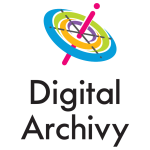“We put the Knowledge in Technology”

One of the most complicated elements in content management derives from the fact that each archive’s collection is different. This is due to the scale, scope, variety, and complexity of the archival collections. It also arises from the fact that there are a variety of contributing factors and specialized requirements. By leveraging our critical thinking and awareness of other successful archival systems, we put our professional knowledge into technology.
Regardless of the size and scope of a project, there are three key elements that require serious review and analysis. In fact, all archival solutions and best practice are influenced by three factors: People, Process and Technology. If you think of it like a Venn diagram, you’ll understand why we believe “Content lies at the intersection of people, process and technology.”
Professional archivists know that an awareness and understanding of archival standards helps define the deliverables and set reasonable goals. By focusing on the relevant elements and contingencies, archivists can help build a trusted digital archive that serves a variety of users and their needs. Solutions based on archival standards help connect relevant content to the specialized interests of its users.
Content Management and Archival Standards
The key component, obviously, is the content itself. As a result, it is critically important to observe people and analyze their processes carefully and non-judgmentally. Knowledge of archival standards, technical requirements and workflows make it easy to use the technology in ways that address the goals and objectives. More importantly, familiarity with other systems helps identify a Designated Community of stakeholders and super-users. This knowledge helps ensure that the technology used in the information ecosystem will deliver results that make assets accessible to the right people in the right format at the right time.
An information ecosystem is created by and dependent on its users, the software and the procedures. A clear understanding of goals and objectives allow archivists to leverage Technology, People and Processes in a way that sets up the institutional archive for success. A successful content management system is effective and efficient, and remains flexible enough for future growth and change. This creates a winning User Experience that ensures the archive is both useful and user-friendly.

